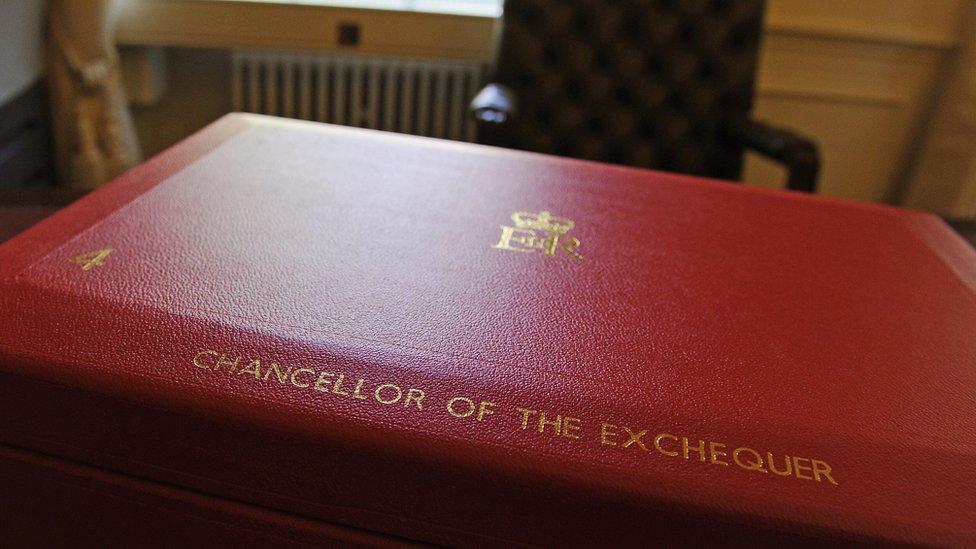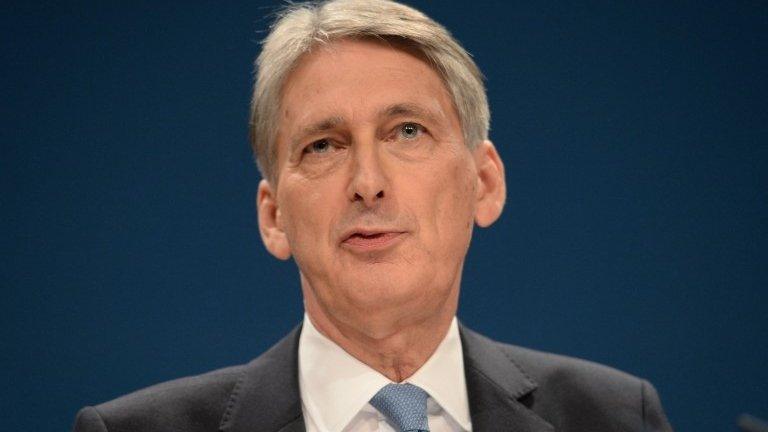Autumn Statement abolished by chancellor
- Published

This year's Autumn Statement will be the final one, the Chancellor, Philip Hammond, has announced.
Starting next year, the UK will have a Budget in the autumn, while a Spring Statement will be issued from 2018, replacing the March Budget.
However, this Spring Statement will be on a much smaller scale than the current Autumn Statement.
"No other major economy makes hundreds of tax changes twice a year, and neither should we," Mr Hammond said., external
"This is my first Autumn Statement as chancellor," he said.
"After careful consideration, and detailed discussion with the Prime Minister, I have decided that it will also be my last."
The announcement means that the Budget statement due in March next year will be the last spring Budget.



Time for change
The introduction of an autumn Budget means tax changes will be announced well in advance of the start of the tax year.
The chancellor said the change would allow for "greater Parliamentary scrutiny" of any changes ahead of their implementation.
From 2018 there will be a Spring Statement, which will be a response to forecasts from the Office for Budget Responsibility, but this will not be a "major fiscal event", according to the chancellor.
"If unexpected changes in the economy require it, then I will, of course, announce actions at the Spring Statement, but I won't make significant changes twice a year just for the sake of it," Mr Hammond said.
The chancellor said this was a "long-overdue reform" to the tax-policy making process in the UK.
Back to the future
This will not be the first time the UK has seen a Budget held in the autumn. There has been back-and-forth movement as governments have changed.
The practice during the Callaghan and Thatcher governments was for a Budget in the spring. It focused on taxation and was accompanied by an Autumn Statement setting out the government's spending plans for the next year.
In 1993, the then chancellor Kenneth Clarke merged tax and spending announcements into an autumn Budget. There was also a short summer economic forecast, when figures would be updated.

How will future government financial statements work?
Spring 2017- Budget Statement
Before end of 2017- Second 2017 Budget
2018 The first Spring Statement
November 2018 Budget
2019 Spring Statement- responding to the OBR

When Gordon Brown was chancellor, he reverted to a Budget in March and added a Pre-Budget Report (PBR), which was intended to be a short document reporting on progress since the Budget.
Without introducing any tax measures, the PBR was meant to assist the discussion of tax proposals, but it became for all intents and purposes a second annual Budget.
George Osborne changed the name of the PBR to the Autumn Statement, but the format was the same and it contained many tax measures, sometimes more than were included in the March Budget.
However, not everyone was happy with Mr Hammond's announcement to revert to an autumn Budget.
"The Autumn Statement has long been a Budget in all but name, and two Budgets a year are too many. But the chancellor simply seems to be swapping the statements around," said Alex Henderson, tax partner at PwC.
"There's a good reason Budgets happen in March as that's when the government's fiscal year ends and there's adequate data to work with. March budgets date back to medieval times, for good reason," he added.
- Published23 November 2016

- Published23 November 2016
